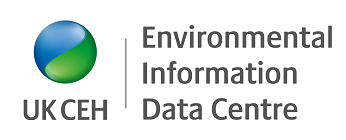NERC-funded researchers generate a large amount of data, essential for answering the questions under investigation but also potentially useful for future work. It is essential to manage these data properly to ensure high quality data are available for use within the project lifetime and beyond. This page provides information about the benefits of managing data correctly and the general expectations for data management during the research grant period.
Planning for data management is valuable to ensure project deliverables are achieved and to ensure appropriate long-term data access and services are put in place including minting a DOI for persistent acknowledgement. Each grant is expected to have an active data management plan (DMP) that facilitates a planned approach to data use during the project and ultimately ensures datasets of long-term value can be made available for re-use.
The EIDC provides staff for support and guidance in developing a data management plan. If you haven't already contacted us, please identify a member of your project team to act as the data lead and contact us as soon as possible.
Benefits of good data management planning
Environmental data are a valuable resource. A planned approach of how data are to be acquired, stored, managed and archived for re-use will help to ensure maximum benefits from good quality data are obtained, for example:
- Managing risk
- Planning ahead helps minimise risks to the data and their use helping to ensure that they are fit for purpose.
- Quality Assurance
- Planning in advance increases the likelihood that high quality data will be produced by the project.
- Audit trail
- Documenting how data will be created, acquired, manipulated and analysed provides an audit trail. This contributes to the creation of a transparent, repeatable process.
- Compliance with legal and funder requirements
- Good data management planning will help to ensure a project meets its legal and funder requirements (for example, NERC data policy, BBSRC, INSPIRE, FoI/EIR).
- Long-term security and accessible data
- A data management plan will detail what happens to data at the end of the project to ensure that they are held securely and made available for the long-term. The EIDC can provide these data curation services.
- Persistent acknowledgement of your effort
- A DOI for the dataset will be minted by EIDC which can then be used as a citation reference for the dataset. EIDC guarantees metadata for the dataset will be web-discoverable in perpetuity.
Timeline
|
First 3-6 months of grant |
EIDC will agree the initial DMP with you. It is however a dynamic document and changes can be agreed. |
|---|---|
|
Annually |
EIDC will contact you to review the agreed DMP annually during the grant period. Any changes need to be agreed. |
|
6 to 9 months before grant end |
Detailed planning should start for deposit of any datasets identified as of long-term value in Section 4*. For datasets planned to be archived at EIDC, all specific details of arrangement for deposit and subsequent access to data will be defined in an EIDC Service Agreement (SA). The SA(s) will be appended to this document when developed. |
|
End of grant |
Soon after the end of the grant EIDC will review the DMP to confirm that the Preservation Plan has been implemented for each dataset identified as of long-term value. EIDC are required to report the outcome of each grant DMP to NERC. |
*Datasets can be deposited to EIDC as soon as they are complete and a Digital Object Identifier (DOI) issued (with an embargo on access if needed).
Templates and Guidance Documents
|
Document Name |
Document Description |
|---|---|
|
An EIDC Data Management Plan template (incorporating the NERC DMP template) |
|
|
Guidance for using the EIDC DMP template |
|
|
Guidance on documentation required for datasets |
